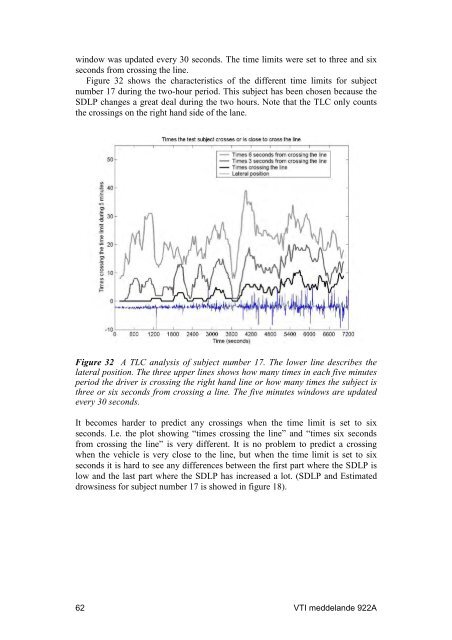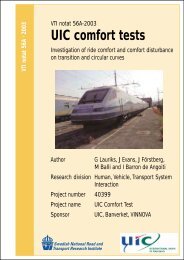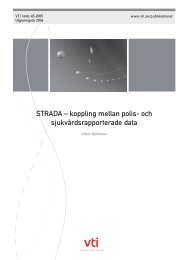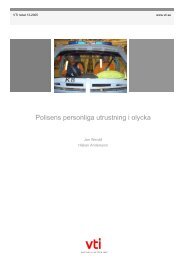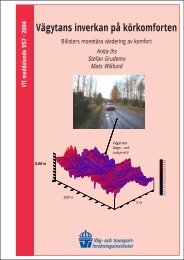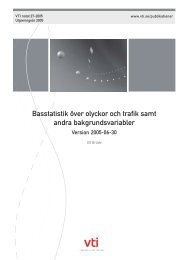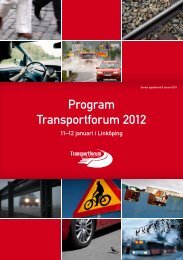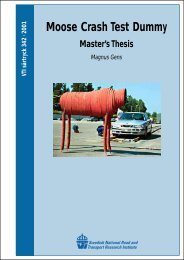Vehicle control and drowsiness - VTI
Vehicle control and drowsiness - VTI
Vehicle control and drowsiness - VTI
- No tags were found...
You also want an ePaper? Increase the reach of your titles
YUMPU automatically turns print PDFs into web optimized ePapers that Google loves.
window was updated every 30 seconds. The time limits were set to three <strong>and</strong> sixseconds from crossing the line.Figure 32 shows the characteristics of the different time limits for subjectnumber 17 during the two-hour period. This subject has been chosen because theSDLP changes a great deal during the two hours. Note that the TLC only countsthe crossings on the right h<strong>and</strong> side of the lane.Figure 32 A TLC analysis of subject number 17. The lower line describes thelateral position. The three upper lines shows how many times in each five minutesperiod the driver is crossing the right h<strong>and</strong> line or how many times the subject isthree or six seconds from crossing a line. The five minutes windows are updatedevery 30 seconds.It becomes harder to predict any crossings when the time limit is set to sixseconds. I.e. the plot showing “times crossing the line” <strong>and</strong> “times six secondsfrom crossing the line” is very different. It is no problem to predict a crossingwhen the vehicle is very close to the line, but when the time limit is set to sixseconds it is hard to see any differences between the first part where the SDLP islow <strong>and</strong> the last part where the SDLP has increased a lot. (SDLP <strong>and</strong> Estimated<strong>drowsiness</strong> for subject number 17 is showed in figure 18).62 <strong>VTI</strong> meddel<strong>and</strong>e 922A


